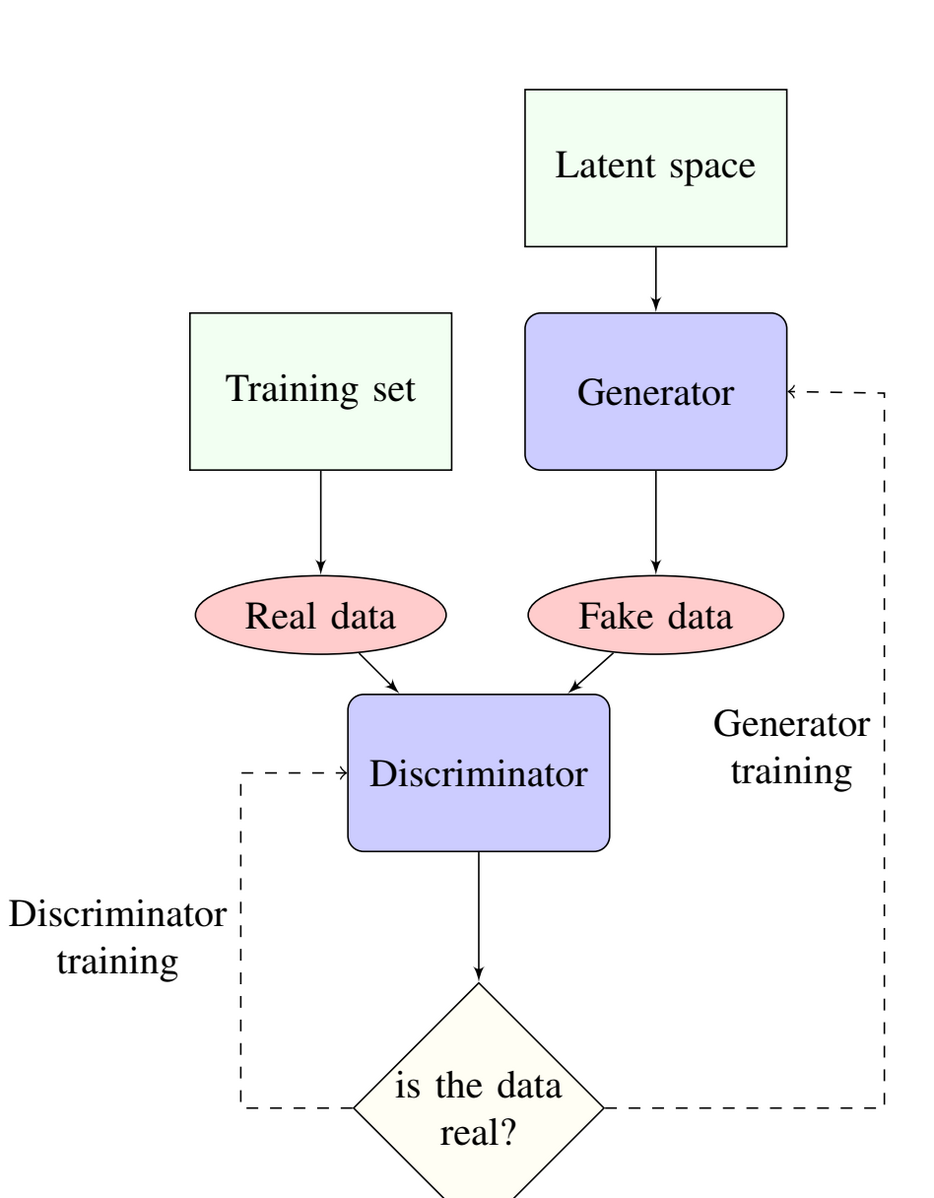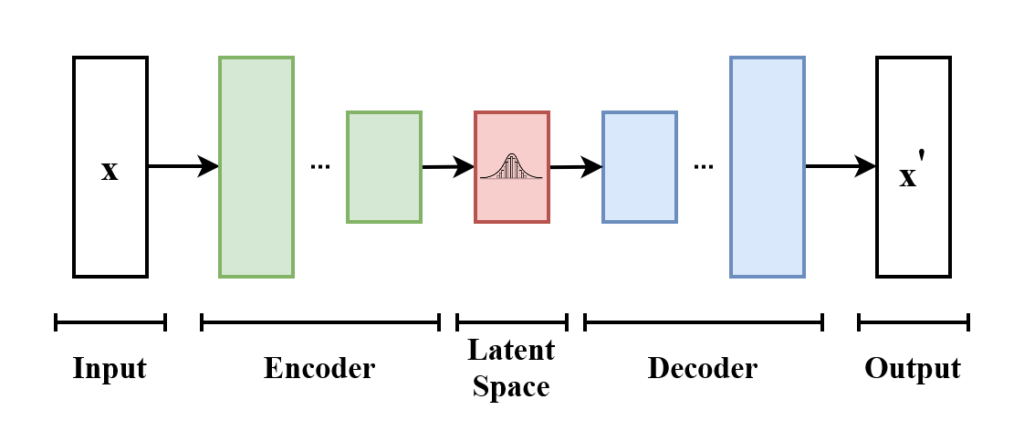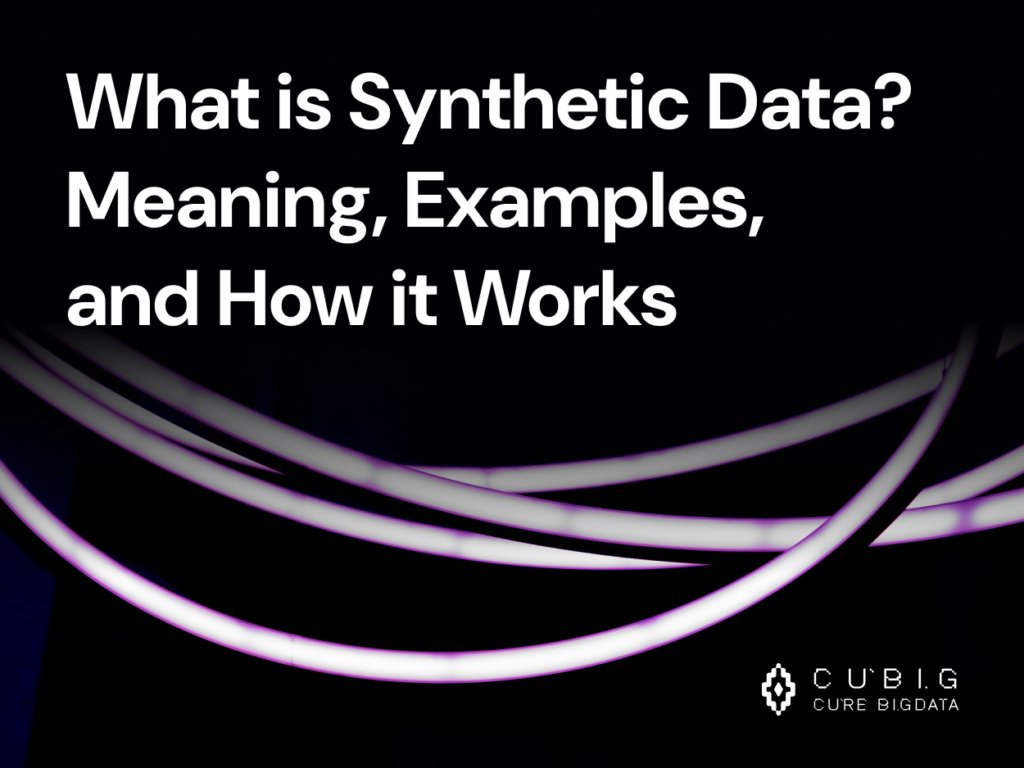What Is Synthetic Data? Meaning, Examples, and How It Works
Synthetic data is now a key tool for safely analyzing data without risking privacy. In simple terms, it is fake data made by AI that keeps the same patterns as real data but does not include real personal details. This matters more than ever, as privacy rules grow stricter around the world.
In places like Europe and the U.S., laws such as GDPR and HIPAA require strong data protection. In South Korea, starting in 2024, the Personal Information Protection Commission (PIPC) approved the use of synthetic data. This gives companies a safe way to work with sensitive data while following privacy laws.
What is the Meaning of Synthetic Data?
The Definition of Synthetic Data
Synthetic data is artificially generated using computer algorithms. It mimics the patterns and structure of real-world data but does not include any actual personal or sensitive information. Because it reflects key characteristics of the original data, synthetic data allows safe and meaningful analysis without compromising privacy.
Comparing Privacy-Enhancing Technologies (PET): Synthetic Data vs De-idenficatino vs Homomorphic Encryption
1. Data handling method
- Synthetic Data: Generates new data that mimics the statistical patterns of real data, without using any actual records.
- De-identification: Removes or modifies personal identifiers within existing datasets.
- Homomorphic Encryption: Keeps data encrypted and allows secure computations without revealing the raw content.
2. Privacy protection level
- Synthetic Data: Very low risk of re-identification. It contains no real personal data.
- De-identification: Moderate risk. Individuals may be re-identified by linking with other datasets.
- Homomorphic Encryption: Low risk. Raw data remains hidden but still exists in encrypted form.
3. Data utility for analysis
- Synthetic Data: High utility. Retains statistical value for AI and analytics tasks.
- De-identification: Lower utility. Key variables may be distorted or removed.
- Homomorphic Encryption: Limited utility. Encrypted computations are restrictive and complex.
4. Computational efficiency
- Synthetic Data: Requires initial generation, but runs efficiently afterward.
- De-identification: Fast to apply, but may need additional processing or model adjustment.
- Homomorphic Encryption: Highly resource-intensive. Not suitable for real-time or large-scale use.
5. Suitability for sharing and collaboration
- Synthetic Data: Easily shareable with minimal privacy risk.
- De-identification: Sharing can be risky due to re-identification concerns.
- Homomorphic Encryption: Difficult to share or use collaboratively due to encryption complexity.
6. Alignment with privacy regulations
- Synthetic Data: Generally aligns well with laws like GDPR and HIPAA.
- De-identification: May fall short under strict legal standards.
- Homomorphic Encryption: Strong protection in theory, but still regulated as real data.
🔗 Read more: Why Synthetic Data is the Superior Choice Over Homomorphic Encryption.
AI-Powered Synthetic Data Generation Models
Generative Adversarial Networks (GANs)
GANs are neural networks with two parts: a generator and a discriminator. The generator creates synthetic data. The discriminator checks if the data is real or fake. You can think of the generator as a counterfeiter and the discriminator as a police officer. As they compete, the generator improves its ability to make realistic data.

Image by Ian Goodfellow, via Wikimedia Commons
Licensed under CC BY-SA 4.0
Advantages of GAN
- GANs create data quickly once training is complete.
- They are useful when fast data generation is needed.
Disadvantages of GAN
- Training is often unstable. The generator and discriminator overcorrect each other, causing performance to swing.
- GANs sometimes produce only a few types of outputs. This is called mode collapse.
- GANs may not perform well outside image data. Newer models like diffusion models are often more stable.
Variational Autoencoders (VAEs)
VAEs create synthetic data using a method called latent encoding. An encoder compresses the input. A decoder rebuilds the data from this compressed version. Unlike GANs, VAEs use probability instead of a competitive setup.

Licensed under CC BY-SA 4.0
Advantages of VAE
- VAEs keep the original data’s probability structure. This helps with smooth transitions and exploration.
- Training is stable and avoids common GAN problems.
- The compressed space (latent space) is often easy to understand and use in analysis.
Disadvantages of VAE
- Performance depends on balancing data accuracy and regularization.
- The outputs can look blurry compared to GAN results.
- VAEs may have trouble producing high-resolution data.
Diffusion Models
Diffusion models create data by adding and removing noise step by step. They learn the data pattern through this repeated process. These models are popular for generating high-quality images.

Licensed under CC BY-SA 4.0
Advantages of Diffusion Model
- They produce data that is both high in quality and diverse.
- Their training is simple and reliable.
Disadvantages of Diffusion Model
- Data generation is slow because of the many steps involved.
- These models need a lot of computing power, more than GANs.
Large Language Models (LLMs)
LLMs are trained on large collections of text. They can generate human-like sentences and paragraphs. LLMs are useful for creating synthetic data in language tasks.
Advantages of LLMs
- They use knowledge from pre-training to generate rich and informative text.
- LLMs create diverse and context-aware outputs.
- You can customize them easily with prompt tuning
Disadvantages of LLMs
- Inference can be slow due to heavy computation.
- It can be hard to make LLMs produce structured or exact formats.
- Writing good prompts takes time and a deep understanding of how the model behaves.
How Is Synthetic Data Used?
Synthetic data is changing the way organizations access, share, and use information. It helps protect privacy and supports advanced AI. Below are five key ways synthetic data is solving real-world challenges across industries.
1. Protecting Privacy in Sensitive Environments
Synthetic data improves privacy by creating fake—but statistically realistic—records. These records do not include any real personal information. This is especially useful in fields like healthcare, finance, and retail, where privacy rules are strict.
Key Benefits:
- Avoids re-identification risks by not using real personal data
- Helps bypass legal restrictions on secondary data use
- Works well with differential privacy methods for stronger protection
2. Staying Compliant and Reducing Risk
Privacy laws like GDPR, HIPAA, and PIPC are complex. Synthetic data provides a safer option than using real data. It helps teams stay compliant and lowers legal and ethical risks.
Key Benefits:
- Enables privacy-safe analytics
- Reduces legal exposure from sensitive data
- Encourages innovation in regulated industries
3. Enabling Safe Data Sharing
Synthetic data lets teams and partners share information without privacy concerns. This improves collaboration and speeds up development.
Key Benefits:
- Removes personal identifiers from shared datasets
- Makes cross-team and cross-company collaboration easier
- Boosts productivity by removing access restrictions
4. Improving Fairness and Diversity
AI models need diverse training data to perform well. Synthetic data helps balance datasets, fix biases, and create rare edge cases.
Key Benefits:
- Improves model accuracy across varied situations
- Reduces dataset bias with more balanced examples
- Adds rare or extreme events for better anomaly detection (e.g., in cybersecurity or medical fields)
🔗 How Synthetic Data Solves Data Silos and Enhances Data Sharing.
5. Supporting AI and Machine Learning
Synthetic data solves common AI training problems like data shortage, imbalance, and fairness.
It creates high-quality, customized datasets using generative AI.
Key Benefits:
- Keeps the core statistics of the original data
- Allows customization with specific features or labels
- Uses powerful models (like Stable Diffusion or LLMs) for realistic data generation
How to Ensure the Performance of Synthetic Data
Evaluating synthetic data is essential. It helps confirm two things:
- Personal privacy is protected.
- The data is still useful for real-world tasks.
This evaluation combines:
- Mathematical frameworks like Differential Privacy (DP)
- Practical, measurable metrics
Applying Differential Privacy
Differential Privacy (DP) is a method to protect individuals in a dataset.
It ensures that adding or removing one person’s data does not noticeably affect the overall result.
To apply DP:
- Controlled noise is added during the data generation process.
- This noise hides individual details while keeping key statistical patterns.
With DP, organizations can:
- Use data for analytics or AI
- Stay compliant with privacy regulations
Supporting Evaluation Metrics
Synthetic data should be evaluated across three categories:
- Utility – Is the data useful?
- Security – Is privacy protected?
- Scalability – Does it work in large-scale use?
1. Evaluating Data Utility
- Quality Verification
Measures how well the synthetic data reflects the original dataset’s statistical features. - Two-Dimensional Correlation
Checks if the relationships between pairs of variables are preserved. - Indistinguishability
Tests whether humans or algorithms can tell synthetic data apart from real data.
The less distinguishable, the better the quality and privacy. - Model Performance Evaluation
Compares how well machine learning models perform when trained on synthetic data vs. real data.
2. Evaluating Data Security
- Identification Risk
Measures the chance that someone’s identity could be revealed from the synthetic data. - Linkage Risk
Assesses the risk of re-identification by linking synthetic data with external datasets using shared attributes. - Inference Risk
Evaluates whether private or sensitive information about individuals can be guessed from the synthetic data.
3. Evaluating Data Scalability
- Data Duplication Rate
Checks how often records are repeated in the synthetic dataset.
Too many duplicates may suggest poor generation and reduce data quality. - Data Diversity Verification
Measures how well the synthetic data captures variety.
This ensures edge cases and rare patterns are present—especially useful in data augmentation.
By using clear metrics and privacy frameworks like DP, organizations can create and manage synthetic data that is both safe and powerful for real-world use.
Examples of Synthetic Data in Industry: Use Cases
Healthcare and Medical Research
Synthetic data helps doctors and researchers train AI without breaking privacy laws.
It follows strict rules like HIPAA and GDPR. By using fake but realistic patient records, teams can build and test medical tools safely. This also speeds up drug discovery and supports personal treatment plans. Since health data is very sensitive, many use Differential Privacy (DP). DP adds extra protection to each patient’s identity while keeping the data useful.
🔗 Read more on how synthetic data is transforming healthcare.
🔗 Learn how differential privacy enhances data protection.
Finance and Banking
Banks use synthetic data to improve fraud detection, credit scoring, and risk control. It helps AI models learn patterns without using real customer data. This keeps user info private and helps banks follow data laws like GDPR.
🔗 Discover how synthetic data accelerates AI adoption in finance.
Retail and E-commerce
Retail companies use synthetic data to understand how people shop. It helps them predict demand and offer better product suggestions. They can test systems without using real customer details. That keeps data private while improving service.
🔗 Explore 5 innovative ways synthetic data is transforming retail.
Cybersecurity and Fraud Detection
Synthetic data helps teams train fraud and threat detection systems. It protects privacy while improving security models. These fake datasets lower risk and don’t expose real user data.
🔗 Learn how synthetic data enhances cybersecurity.
Synthetic data makes AI safer and smarter. It protects privacy, supports compliance, and powers innovation.
That’s why more industries are using it every day.
Azoo: A User-Friendly Marketplace for High-Utility Synthetic Data
What is Azoo?
Azoo is a simple and flexible synthetic data marketplace. Users can buy and sell synthetic data in many formats—images, tables, and text.
Unlike traditional datasets, Azoo’s synthetic data is built for high utility and broad usability. It is ready to be used in AI training, analytics, and research across industries.
Each dataset on Azoo goes through a strict evaluation process. It is checked for quality, security, and usability.
Buyers can trust that the data:
- Keeps key statistical patterns
- Meets privacy rules
- Works well for machine learning
Sellers can also safely earn money from their data—without exposing any personal information.
What Makes Azoo Special?
SynData: Trusted Evaluation for Every Dataset
Azoo uses clear evaluation standards to check each dataset. These include:
- Quality Assurance:
Makes sure the data is statistically accurate and consistent. - Security Validation:
Tests for privacy risks and confirms the data is safe from re-identification. - Data Diversity and Expansion:
Checks if the data covers many cases and helps models generalize better.
DataXpert: AI-Powered Data Analysis
Azoo includes DataXpert, an AI assistant powered by large language models (LLMs) and retrieval-augmented generation (RAG).
With DataXpert, users can:
- Ask questions in natural language
- Explore their datasets easily
- Find trends, predictions, and insights
Users can also:
- Compare synthetic data with their own data
- Test if a dataset fits their needs
- Benchmark or validate for specific use cases
Whether you’re improving an AI model or planning a data strategy, DataXpert makes decisions faster and smarter.
High-Quality Datasets Across Diverse Domains
Azoo provides high-utility synthetic data across many fields:
- Images for computer vision
- Tables for structured analytics
- Text for language modeling and generation
Every dataset is:
- Carefully reviewed
- Relevant to real-world applications
- Ready for use in AI training and testing
Azoo helps organizations unlock the full power of synthetic data—securely, smartly, and efficiently.

 Data Market
Data Market
